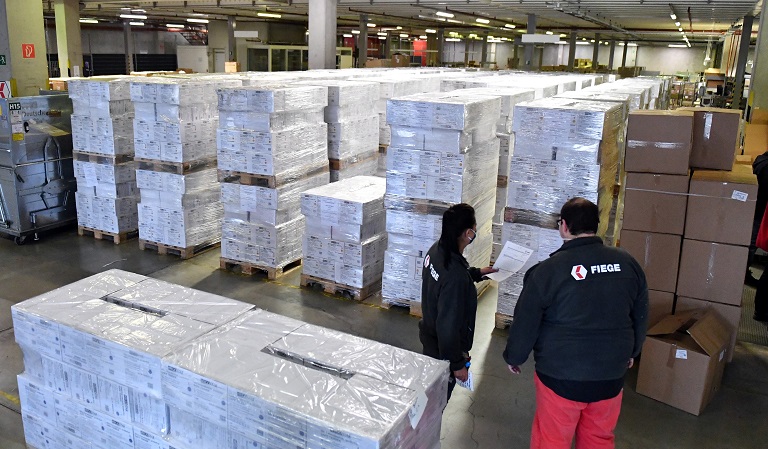International Expansion: Leveraging China Consolidation for New Market Entry
Introduction
In today’s globalized economy, businesses seeking to expand into new markets often turn to China as a sourcing hub for cost-effective and high-quality products. China’s vast manufacturing capabilities and diverse product range make it an ideal partner for international expansion. However, navigating the logistics of shipping goods from China to new markets can be complex. China consolidation offers a strategic solution to streamline this process, enabling businesses to efficiently manage costs, logistics, and market entry challenges.
Why Choose China as a Sourcing Hub?
- Diverse Product Range: China manufactures a wide array of products, from consumer electronics and apparel to industrial machinery and components. This diversity allows businesses to source virtually any product needed for their market entry strategy.
- Cost-Effectiveness: Chinese manufacturers often offer competitive pricing due to lower labor and production costs. This can significantly reduce the cost of goods sold (COGS) and improve profit margins for businesses entering new markets.
- Established Supply Chains: China has well-developed supply chain infrastructure, making it easier to source, produce, and ship products efficiently. This can reduce lead times and improve overall supply chain reliability.
Benefits of China Consolidation
- Reduced Shipping Costs: By consolidating multiple shipments from different Chinese suppliers into a single container or freight shipment, businesses can benefit from economies of scale. This can lead to substantial savings on shipping costs compared to shipping smaller, individual orders.
- Streamlined Logistics: Consolidation simplifies the logistics process by reducing the number of shipments to track and manage. This can lead to fewer logistical headaches and more efficient operations.
- Improved Inventory Management: Consolidating shipments allows for better coordination of inventory, reducing the risk of overstocking or stockouts. This can help businesses maintain optimal inventory levels and respond more quickly to market demands.
Steps to Implement China Consolidation for New Market Entry
1. Market Research and Supplier Selection
- Identify Target Market Needs: Conduct thorough market research to understand the product demands and preferences of your target market. This will help you determine which products to source from China.
- Find Reliable Suppliers: Use platforms like Alibaba to identify and vet Chinese suppliers. Look for suppliers with good reputations, certifications (e.g., ISO), and a track record of reliable production and delivery. Consider visiting suppliers in China to assess their facilities and capabilities firsthand.
2. Prepare for Importing
- Understand Customs Regulations: Research the customs regulations of your target market. This includes关税 rates, prohibited and restricted goods, and required documentation. Ensure that your products comply with all relevant standards and obtain necessary certifications (e.g., CE, FCC).
- Set Up Import Contracts: Draft clear import contracts with your Chinese suppliers. These contracts should outline product specifications, quality standards, delivery terms, and payment schedules. Make sure to include clauses that protect your interests, such as inspection rights and penalties for late delivery.
3. Choose a Freight Forwarder
Select a reputable freight forwarder with experience in shipping from China to your target market. Freight forwarders can provide valuable assistance with logistics planning, customs clearance, and transportation. They can also help you navigate any challenges that may arise during the shipping process.
4. Consolidate Shipments
Work with your freight forwarder to consolidate shipments from multiple Chinese suppliers into a single shipment. This can be done by coordinating shipping schedules and using consolidation warehouses in China. The freight forwarder can handle the logistics of combining shipments and ensuring they are properly documentation and labeled.
5. Customs Clearance and Delivery
- Submit Customs Declarations: Provide accurate and complete customs documentation to facilitate smooth clearance. This includes commercial invoices, packing lists, certificates of origin, and any other required paperwork.
- Pay Duties and Taxes: Pay any applicable duties and taxes on the imported goods. Work with your freight forwarder or a customs broker to ensure all payments are made correctly and on time.
- Deliver to Destination: Once customs clearance is complete, arrange for the delivery of goods to your destination warehouse or directly to customers. Use reliable transportation providers to ensure timely and secure delivery.
Case Study: Successful Market Entry Through China Consolidation
A U.S.-based e-commerce company looking to expand into the European market faced challenges with high shipping costs and complex logistics. By partnering with a Chinese freight forwarder and consolidating shipments from multiple suppliers in China, the company was able to reduce shipping costs by 30% and streamline its logistics operations. This allowed the company to successfully launch its products in Europe and capture a significant share of the market.
Conclusion
Leveraging China consolidation can be a powerful strategy for businesses looking to expand into new markets. By carefully selecting suppliers, preparing for importing, and working with a reliable freight forwarder, businesses can overcome the challenges of international expansion and achieve success in new markets.

